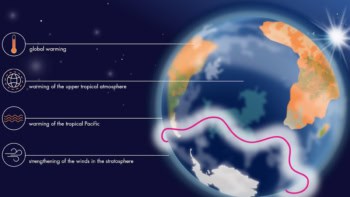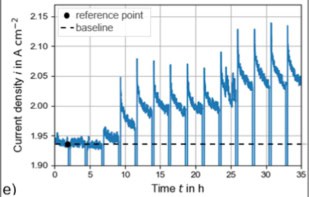
In the past, scientists were reluctant to attribute particular extreme weather events to climate change. But for the second consecutive year, they have done so with confidence.
Thanks to improved modeling, increased computer power, and better skill in interpreting data, attribution science – a young branch of climate science – has been blossoming, says Jeff Rosenfeld, editor-in-chief of the Bulletin of the American Meteorological Society (BAMS).
It’s a calculation of how the risks have changed in the new climate
Jeff Rosenfeld
Rosenfeld spoke at the American Geophysical Union (AGU) Fall Meeting in Washington, DC, in December 2018, on the release of Explaining Extreme Events of 2017 From A Climate Perspective, the seventh in an annual series published by BAMS.
Based on the research of 120 scientists in 10 countries, the report comprises 18 peer-reviewed chapters; each deals with a particular weather phenomenon during 2017.
“The studies look at what the climate is now, then they run tests to compare it to what the world might have been had we not been releasing greenhouse gases at this rate,” Rosenfeld said at AGU. “It’s a calculation of how the risks have changed in the new climate.”
Martin Hoerling of the US National Oceanic and Atmospheric Administration (NOAA), editor of the report, said that over the seven years of the Explaining Extreme Events series, 70% of events studied had had some “appreciable climate change footprint”. This trend was predicted in the first IPCC report in 1990, he noted.
The researchers estimate that the Tasman Sea marine heatwave from November 2017 to April 2018 couldn’t have occurred without the input of anthropogenic climate change. The heatwave extended from west of Tasmania, off Australia’s southern coast, to east of New Zealand and included the entire Tasman Sea, an area of 2,000 by 2,800 km.
Although natural variability was important in initiating the heatwave, two global climate model (GCM) ensembles indicate that the record sea surface temperatures, up to 2.5 °C above the long-term norm, “were virtually impossible without anthropogenic influence”, the scientists report.
Other extreme events in the BAMS report were intensified in strength or duration – or both – by climate change. They include instances of heat, drought, flooding and ocean-driven phenomena. For example:
- The record-breaking low precipitation over parts of western Europe during December 2016 can only be understood in the context of human influence on climate, the authors say, in particular the unprecedented reduction of Arctic sea ice, “likely driven by anthropogenic climate change”.
- In 2017 South Korea experienced the hottest May temperature since the beginning of observations from 45 stations in 1973. 2017 was the fourth consecutive year of record-breaking May temperatures, statistically a one-in one-thousand-years event without anthropogenic forcing, but a one-in-one-hundred-years event when human influences on the climate are factored into the models.
- In the Northern Plains of the US, devastating drought conditions developed rapidly during spring and summer of 2017. By August, drought was widespread in eastern Montana and North and South Dakota, leading to wildfires and compromised water resources. Model simulations suggest that, although record low precipitation was the principle cause of this drought, climate change makes droughts with a similar intensity 1.5 times more likely.



